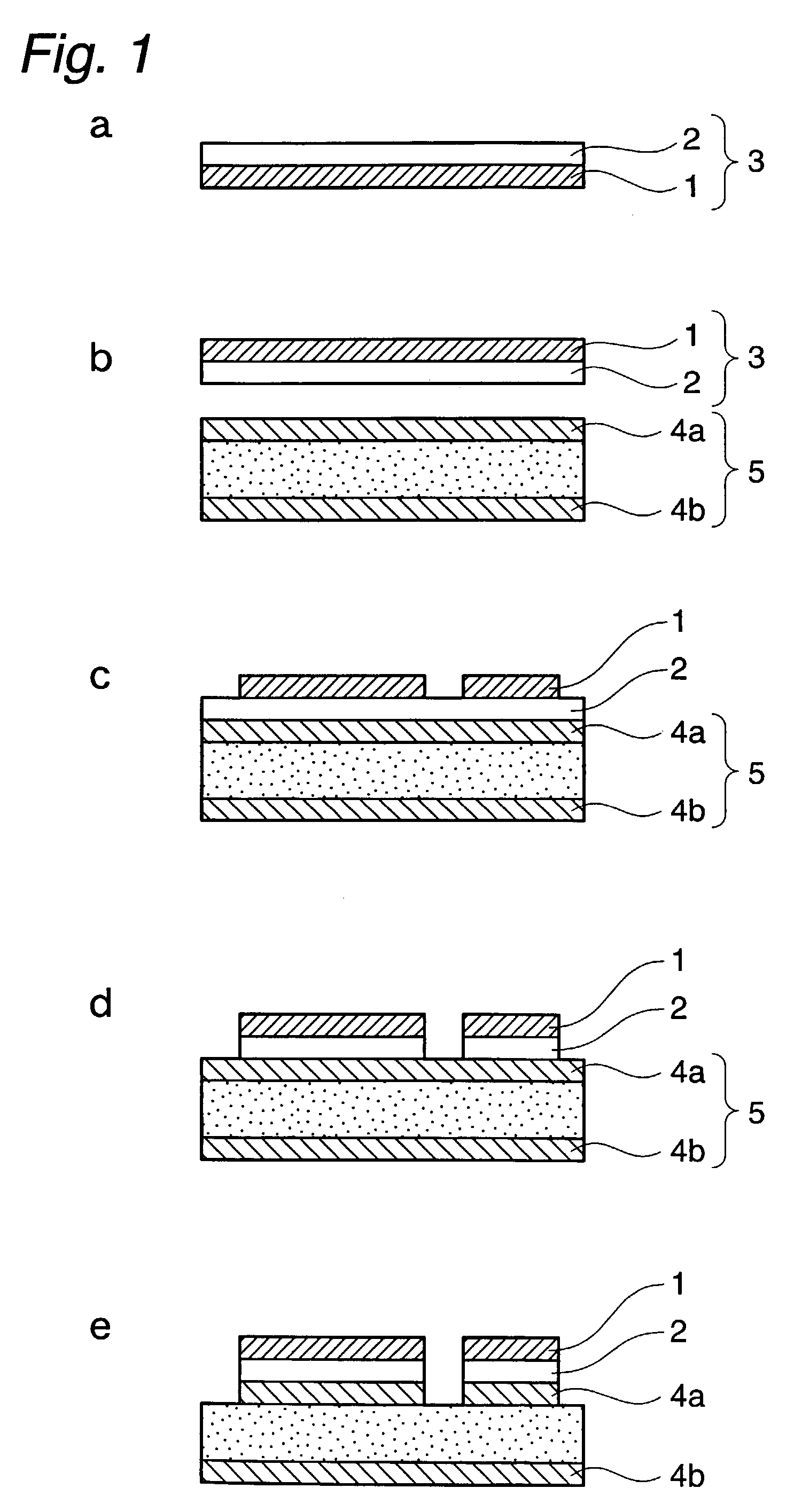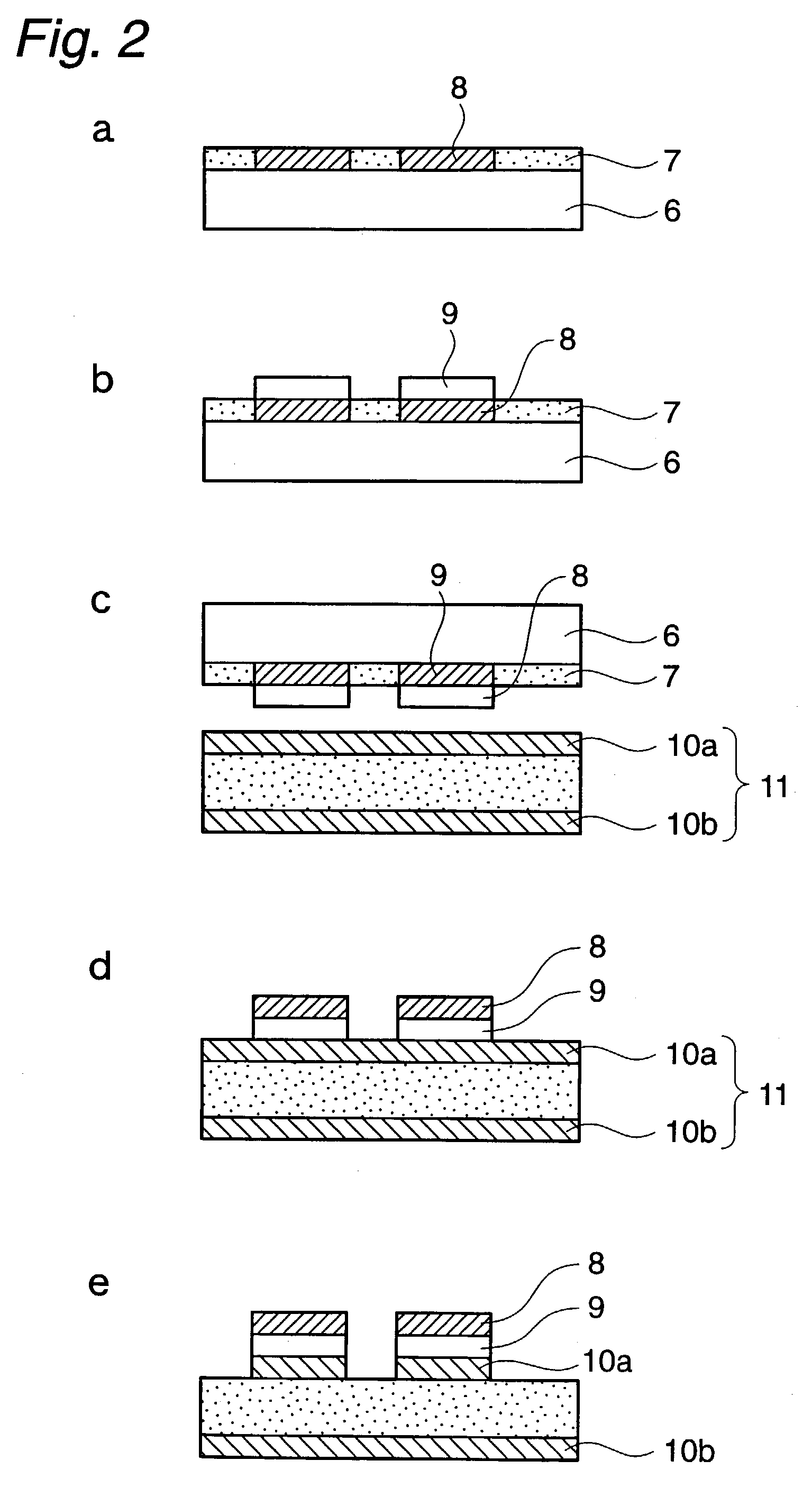Composite particle for dielectrics, ultramicroparticulate composite resin particle, composition for forming dielectrics and use thereof
a technology of composite resin and dielectric, which is applied in the direction of inorganic insulators, pigment treatment with non-polymer organic compounds, conductive materials, etc., can solve the problems of affecting the reliability and endurance of semiconductor boards, affecting the performance of semiconductor boards, etc., and achieves small dielectric loss tangent and high permittivity.
- Summary
- Abstract
- Description
- Claims
- Application Information
AI Technical Summary
Benefits of technology
Problems solved by technology
Method used
Image
Examples
examples
[0749]The present invention will be described more specifically below using Examples, but the present invention is not limited to these Examples. Furthermore, in the following description, “parts” and “%” are based on weight unless otherwise specified. Also, the weight average molecular weight (Mw) in Examples is polystyrene equivalent average weight measured by gel permeation chromatography (GPC) (trade name: HLC-802A) manufactured by Toso Co., Ltd.
example a
Corresponding to Invention 1
Example A1
Production of Composite Particles for Dielectrics (1)
[0750]Barium titanate particles (trade name: “HPAT-1” manufactured by Fuji Titanium Co., Ltd., average particle size: 0.6 μm, permittivity : 2000) was coated with silver under reduced pressure by the vapor deposition method to obtain composite particles for dielectrics (1) with the surface of barium titanate coated with silver.
[0751]A change in weight before and after the vapor deposition showed that barium titanate had 10% of silver deposited thereon. Also, it was shown from SEM observation of powders that fine particles of silver were deposited on the surfaces of particles.
example a2
Production of Composite Particles for Dielectrics (2)
[0752]100 parts of barium titanate particles (trade name: “AT-02” manufactured by Sakai Chemical Industry Co., Ltd., average particle size: 0.2 μm, permittivity: 2000) and 6 parts of Ketjenblack were preliminarily mixed together, and composite particles for dielectrics (2) with Ketjenblack deposited on the surface of barium titanate were obtained by the mechanochemical method using a hybridizer (Nara Kikai Co., Ltd.).
[0753]It was shown from SEM observation of the resulting powders that fine particles of carbon were deposited on the surfaces of particles. Also, it was shown by SIMS that barium titanate had 5% of carbon deposited on the surface based on the weight ratio.
PUM
 Login to View More
Login to View More Abstract
Description
Claims
Application Information
 Login to View More
Login to View More - R&D
- Intellectual Property
- Life Sciences
- Materials
- Tech Scout
- Unparalleled Data Quality
- Higher Quality Content
- 60% Fewer Hallucinations
Browse by: Latest US Patents, China's latest patents, Technical Efficacy Thesaurus, Application Domain, Technology Topic, Popular Technical Reports.
© 2025 PatSnap. All rights reserved.Legal|Privacy policy|Modern Slavery Act Transparency Statement|Sitemap|About US| Contact US: help@patsnap.com



